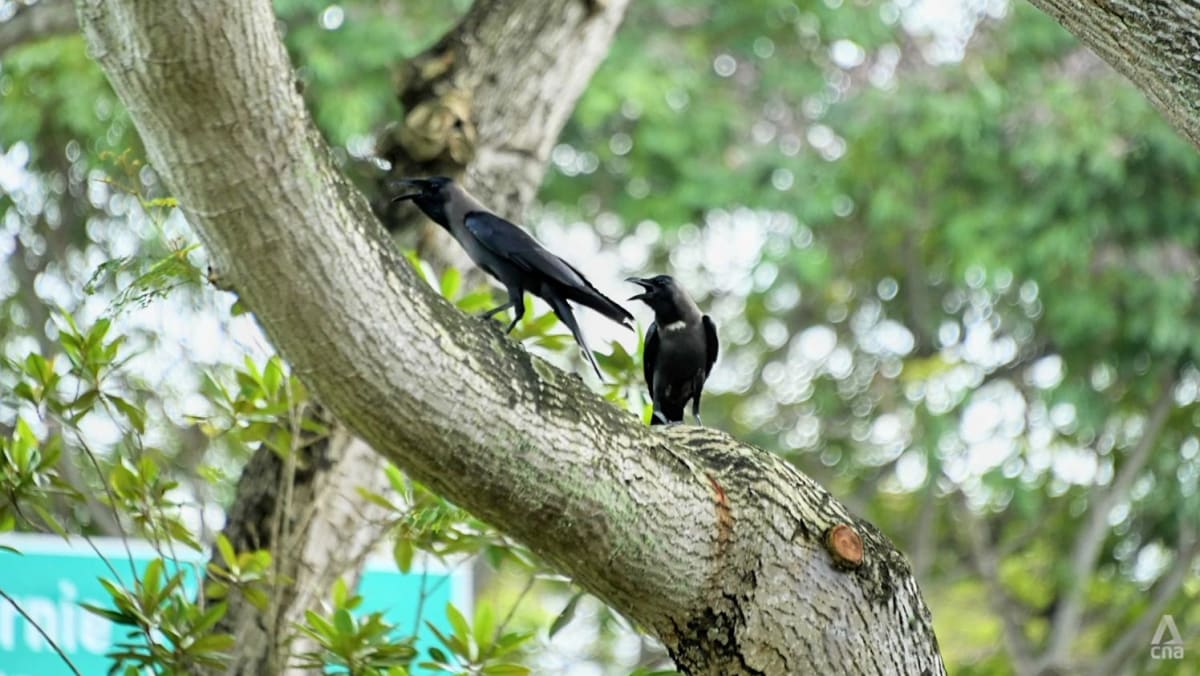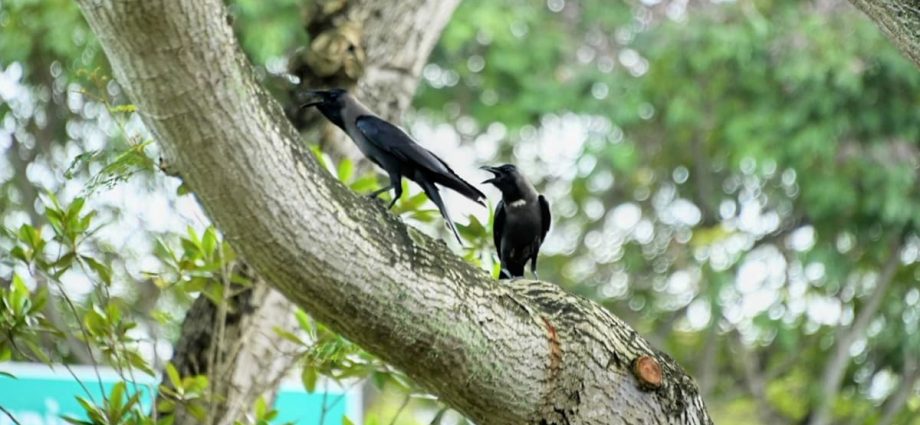
In the past, volunteer shooters from the Singapore Gun Club helped to cull crows. Two former volunteers who did not want to be named confirmed that there was such a programme, which ended in the early 2010s after crow shooting licences were not renewed.
One volunteer who was with the gun club for more than two decades said they used to shoot crows every weekend, with 200 to 300 killed each time. At one such shooting session at Ang Mo Kio in the 1990s, nearly 900 birds were killed, he said.
At one point, the authorities also enlisted the services of Certis CISCO to cull crows. This hit the headlines three years back when an auxiliary police officer was jailed for killing crows with a shotgun and without a safety officer present.
Certis CISCO told CNA it no longer shoots crows.
NParks did not answer CNA’s queries on why the shooting programme was discontinued, but said earlier it reduces food sources and modifies crows’ habitats as part of measures to control the population. NParks also said it adopts the “more humane method of trapping and subsequent euthanasia”.
“BETTER WAYS TO TREAT ANIMALS”
Although the shooting of crows has stopped, ACRES said it is still concerned about the way the birds’ numbers are controlled.
“Just because (crows) are complained about a lot, culling is still often seen as a measure for quick action by town councils and agencies when complaints about noise or sightings come in,” said the group’s co-CEO Anbarasi Boopal.
Crows are killed by placing them in plastic bags and pumping carbon dioxide into the bags, according to Ms Boopal. And this is “not humane euthanasia at all”, she said.
“Using carbon dioxide in a plastic bag may be seen as a cost-effective way for contractors. However, the birds often suffer … and this method may be suggested only for emergency situations such as disease outbreaks for personnel safety.”
She appealed for Singapore to think of “better ways to treat animals”.
The Nature Society Singapore said culling of crows and food management should be done concurrently.
The birds will continue to reproduce despite culling, chairman of the society’s bird group Tan Gim Cheong pointed out.
“We (should) control the way we dispose our waste so that there is less food for them, so over the long term the population goes down,” he said.
Still, with culling, the crow population is immediately reduced – which is “quicker rather than just waiting for the natural effects of (controlling) food”.
“Crows are an invasive species, they are not native to Singapore. They prey on our endangered species, other kinds of birds. We should reduce their numbers so that their impact on our ecosystem is reduced,” Mr Tan said.

